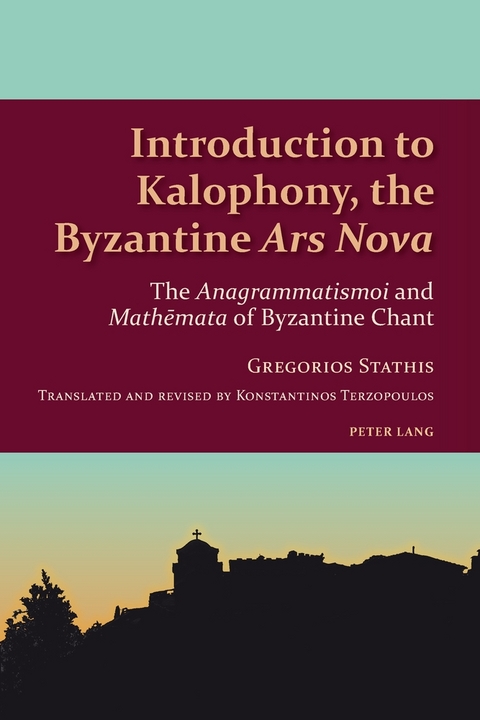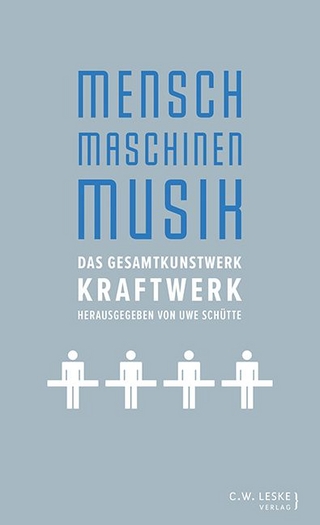Introduction to Kalophony, the Byzantine «Ars Nova»
Peter Lang Group Ag, International Academic Publishers (Verlag)
978-3-0343-0912-7 (ISBN)
The anagrams, or more generally, the math mata and morphologically related kalophonic forms of Byzantine melopoeïa, constitute the artistic creations by which Psaltic Art is known in all its splendour and becomes an object of admiration. Kalophony as ars nova was born following the recovery of the city of Constantinople after the Latin occupation of Byzantium (AD 1204-1261) during the long reign of Andronicus II (1282-1328) and reached its final form in the first half of the fourteenth century. During the years 1300-1350, four key composers and teachers of the Psaltic Art imposed a new attitude of melic composition on the preexisting forms and designated new compositional techniques dominated by the beautifying kallopistic element. They created new compositions in the new spirit of kall pismos and musical verbosity. This new musical creation was christened with the term kalophony and this period is the golden age of Byzantine Chant.
Originally published under the title Hoi anagrammatismoi kai ta mathemata tes byzantines melopoiïas (1979 plus seven reprints), this publication thoroughly investigates and reveals for the first time the entire magnitude of Byzantine kalophony with its individual forms, serving as a systematic introduction to the Greek Byzantine music culture and that of the Byzantine Psaltic Art at the height of its expression.
Gregorios Stathis is professor emeritus of Byzantine musicology and hymnology at the National and Kapodistrian University of Athens and a preeminent, internationally recognized scholar in the field. He has studied the vast repository of medieval and late Greek music manuscripts containing Byzantine chant notations the world over, including Mount Sinai and Mount Athos. The author of many publications and choirmaster of numerous recordings of Byzantine and post-Byzantine chant, he is most recognized for his award-winning catalogue of the chant manuscripts on Mount Athos, now in its fifth volume, as well as his descriptive catalogue of the chant manuscripts in the monasteries of Meteora. Konstantinos Terzopoulos, one of the author’s doctoral students, is a parish priest, an independent scholar and researcher in Byzantine musicology and Orthodox theology and liturgy. He is the author of works on Byzantine chant, Byzantine liturgy and Typikon. He is currently preparing a critical edition and English translation of the homilies of Anastasius Sinaita.
Contents: A synoptic review of Byzantine ecclesiastical melopoe a - The form of the Math matarion - The tradition of the kalophonic melos - The analysis of the Math matarion - Incipits of the anagrams and math mata in the Math matarion transcribed by Chourmouzios - Reproduction of the kalophonic stich ron Sigma Sigma from the feast of the transfiguration.
| Erscheint lt. Verlag | 22.10.2014 |
|---|---|
| Reihe/Serie | Studies in Eastern Orthodoxy ; 1 |
| Mitarbeit |
Herausgeber (Serie): René Gothóni, Graham Speake |
| Verlagsort | Bern |
| Sprache | englisch |
| Maße | 150 x 225 mm |
| Gewicht | 510 g |
| Themenwelt | Kunst / Musik / Theater ► Musik ► Musikgeschichte |
| Geisteswissenschaften ► Religion / Theologie ► Christentum | |
| Geisteswissenschaften ► Sprach- / Literaturwissenschaft ► Literaturwissenschaft | |
| Schlagworte | «Anagrammatismoi» • Anagrammatismoi< • «Ars • Byzantine • Chant • Golden Age • Gothóni • Graham • Gregorios • I>of • Introduction • Kalophony • Konstantinos • «Mathemata» • Mathemata • «Mathēmata» • «Math mata» • musical verbosity • Nova» • Nova< • Psaltic Art • René • Speake • Stathis • Terzopoulos |
| ISBN-10 | 3-0343-0912-0 / 3034309120 |
| ISBN-13 | 978-3-0343-0912-7 / 9783034309127 |
| Zustand | Neuware |
| Haben Sie eine Frage zum Produkt? |
aus dem Bereich




